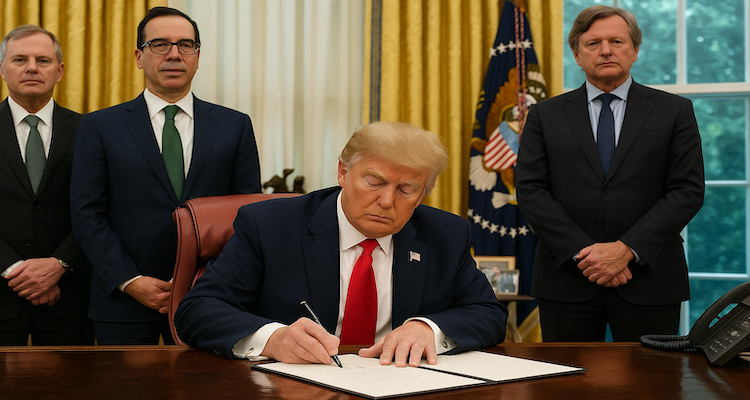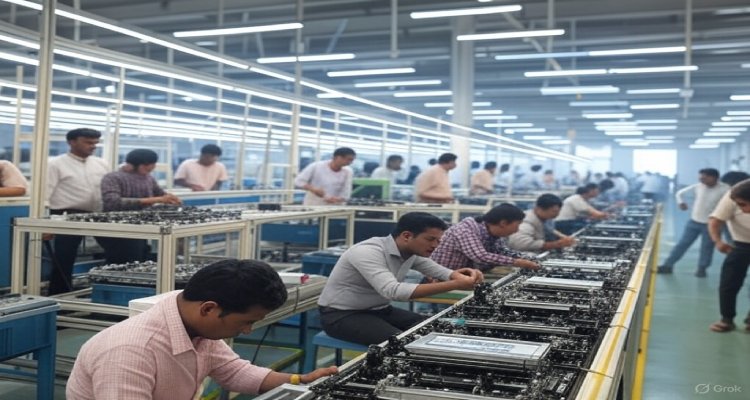India’s $2.7B Electronics Push Aims to Build Component Power
India launches a $2.7 billion scheme to boost electronics component manufacturing, aiming to cut imports and strengthen local supply chains.
Keywords & Hashtags:
India electronics scheme, ECMS India, electronics manufacturing India, component production India, PLI scheme, Make in India, tech supply chain, Indian manufacturing, #ElectronicsIndia, #ECMS, #MakeInIndia ,#SupplyChain ,#PLI,
India’s Electronics Gamble: Building Strength From the Inside Out
In a decisive shift toward deepening its role in global electronics, India has rolled out a new $2.7 billion initiative aimed at turning the tide on a long-standing industry weakness—its reliance on imported components. While the nation has made impressive strides in assembling devices like smartphones, the true measure of domestic value remains stubbornly low.
The new Electronics Component Manufacturing Scheme (ECMS), announced by the Ministry of Electronics and Information Technology (MeitY) on April 8, is designed to change that. By incentivizing the production of key components on home soil, the government hopes to replicate the kind of momentum seen under the Production Linked Incentive (PLI) scheme for mobile phones—and this time, dig deeper into the supply chain.
Why India Needs a Component-Focused Strategy
India’s electronics manufacturing has surged in recent years, growing fivefold from FY15 to FY24 and crossing the ₹9.5 lakh crore mark. But as IT Minister Ashwini Vaishnaw pointed out, this growth has largely come from assembling finished products rather than producing their core parts.
Crucial elements like printed circuit boards (PCBs), resistors, capacitors, and micro-components are still mostly imported. That’s not just a missed economic opportunity—it’s a vulnerability.
A July 2024 report from NITI Aayog warned that the future of India’s electronics sector could stall if it doesn’t rapidly build local capacity in sub-assemblies and components. The challenges outlined include high capital costs, delayed return on investment, lack of economies of scale, and a yawning technology gap between Indian firms and global leaders. ECMS is designed to directly tackle these hurdles.
What the ECMS Offers—and How It Works
At its core, ECMS is an investment magnet, aiming to lure manufacturers by lowering the financial barriers to setting up and scaling component production facilities. The government is offering three types of support:
- Turnover-linked incentives: Firms are rewarded based on their sales performance.
- Capital expenditure (capex) support: A share of setup and infrastructure costs is covered.
- Hybrid incentives: Select products—especially capital-intensive ones—qualify for both support types.
The program zeroes in on 11 key product categories. These include advanced tech like HDI/flexible PCBs and surface-mount devices, as well as essential components such as multi-layer PCBs, enclosures, and high-demand sub-assemblies like display and camera modules.
Some products qualify for both capex and turnover incentives, while others receive targeted support depending on strategic relevance and complexity.
What’s Expected from Participating Manufacturers
To benefit from the scheme, companies must meet escalating targets for both investment and employment. For example, a firm setting up a display module plant would need to invest ₹250 crore over six years, create 300 direct jobs, and generate cumulative sales of ₹1,200 crore.
Job creation isn’t just encouraged—it’s tied directly to the incentives. Failing to meet hiring goals could reduce or even revoke portions of the incentive package. Both greenfield (new projects) and brownfield (expansions of existing operations) investments are eligible, provided they meet the government’s thresholds.
Application Timeline and Oversight
The initial application window opens on May 1, 2025, and runs for three months across most categories. However, for components supporting the ecosystem—such as capital equipment and supply chain parts—the application period extends to two years, with a five-year investment window.
Once approved, businesses have up to six years to earn turnover-based incentives, with an additional one-year buffer to ramp up production.
Oversight will rest with a Project Management Agency (PMA) appointed by MeitY. This body will handle applications, verify investment claims, and report to a governing council comprising key stakeholders from NITI Aayog, the Ministry of Finance, DPIIT, and other central agencies.
The Bigger Picture: Economic and Geopolitical Stakes
The ECMS isn’t just an industrial policy—it’s a calculated pivot toward upstream capability. By nurturing local component production, India can significantly increase its domestic value addition, reduce import dependency, and position itself as a stronger global player.
Experts believe this could transform India’s tech manufacturing landscape, enabling it to capture a larger share of global electronics exports. It also serves as a timely response to shifting global trade dynamics. With former U.S. President Donald Trump reinstating tariffs on Chinese goods, global firms are actively seeking new manufacturing hubs. India’s strategic bet is to become the next best alternative.
This geopolitical context only heightens the urgency for India to shore up its electronics ecosystem—not just for economic gain, but to secure a competitive edge in the new world order of manufacturing.
Conclusion: A High-Stakes Play With Long-Term Payoff
India’s $2.7 billion ECMS marks a bold leap toward self-reliance in electronics. By targeting the very core of the manufacturing process—components and sub-assemblies—it promises to fix a fundamental gap in the nation’s tech infrastructure.
Whether this scheme succeeds will depend not just on the scale of investment, but on execution, innovation, and global demand alignment. If the strategy works, it could turn India into not just an assembly line for the world—but a true manufacturing powerhouse.
Disclaimer:
This article is for informational purposes only and does not constitute financial, investment, or business advice. Readers are encouraged to consult with professionals or official sources before making any business decisions based on this content.
source : Moneycontrol











